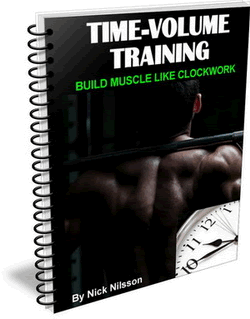By Paul Montes
Once, building muscle meant endless cycles of bulking and cutting.
The belief was that building muscle required gaining fat, and that cutting the fat would then reveal the muscle beneath the adipose layer. However, we now know that bulking and cutting cycles are unnecessary — or worse, lead to health problems. They are a quick fix at best.
Fitness should be a lifestyle. The gradual building of muscle mass and strength over years of fitness training leads to permanent results. One of the key pieces to this long-term approach is to incorporate cardio. When timed correctly, cardio can induce as much lean muscle gain as can weight training.
Lifting heavy weights stresses the muscles and forces them to adapt, which they do readily. But, the body does not want to be in this state of flux. It adapts only as much as it must. When muscles get into a state of adaptation and cease to grow — called homeostasis — it is time to mix things up with cardio. These cardio exercises, when well-timed, deserve a place in any muscle-building program.
HIIT
High-Intensity Interval Training, or HIIT, has garnered much well-deserved attention in recent years for its ability to put the body in a state of prolonged fat burning. Overtraining puts the body in a catabolic state robs the muscles of the nutrients they need to keep working. HIIT avoids this pitfall with precisely timed bursts of effort.
To use HIIT, perform an exercise at maximum intensity for a short burst, followed by a brief recovery period. Repeat for a cycle of three to four bursts, then rest before beginning another set. The duration and timing of these bursts vary with different programs and exercises. Any of the following exercises can be utilized in a HIIT program.
Sprints
Running marathons on a treadmill causes overtraining symptoms that eat away at muscle gains.
A better idea is to use HIIT sprints. Sprinting taxes the quads, calves and hamstrings in ways that few other exercises do. It has been shown in a study to add comparable muscle mass to resistance training. Lactic acid builds quickly in the quadriceps, making HIIT sprints painful, but compression shorts can help improve blood flow to get restorative nutrients to the muscles.

Rowing
Unlike rows with weights, which work the lats and rear delts, rowing machines build more power in the legs. As they acclimate to the steady rhythm of rowing, leg muscles grow rapidly. The mass the rowing motion puts on may not be dramatic at first, but it is measurable. A common method to spur greater growth is to gradually dial up the resistance on the machine. As the exercise becomes easier, though, moving back to heavier weights will keep the adaptation train moving.
Cycling
Avid cyclists often have athletic, aesthetic legs with impressive and useable size. The muscles of the leg respond well to HIIT, so cycling is a natural activity to utilize for building muscle with cardio. Modern stationary cycles normally have programmable features that utilize HIIT principles, so putting them to use in your cardio muscle-building routine is simple.
High-Repetition Weight Training
There is strong science behind the idea of keeping reps in the 8-to-12 range during weight lifting. When the muscles fatigue under heavy load at this range, hypertrophy is induced and muscles grow. Using higher reps and lighter weights also causes hypertrophy, introducing a cardio element to resistance training.
Some muscle groups seem to respond better to high-rep training than others. For spine and joint safety, it is wise to limit extremely high-repetition training to the legs and arms. In any high-volume routine, the risk of overtraining is high. Incorporating it into a conventional weight training regimen limits the risk of overtraining.
Legs
Use low weights and high reps for low-impact exercises like leg extensions and hamstring curls. When banging out fast reps on these isolation movements, the tendency is to use momentum to move the weight quickly. While normally considered poor form, using momentum like this recruits more muscles, elevating the heart rate. Keep the pace fast but the intervals short to instigate skeletal muscle growth.
Arms
The muscles of the forearms respond best to high-repetition training, and bodybuilders have been utilizing high reps on exercises like forearm curls without negative effects for generations. Regular biceps and triceps exercises in the same repetition range can cause damage to the tendons of the elbow, however, so upper arm reps should be kept between 15 and 30 for cardio-style isolation work.
Using HIIT-like methods for arm training leads to dramatic and sudden results, but it is wise use them for no more than about four consecutive weeks — with adequate rest days — before returning to the 8- to 12-rep range.
Conclusion
Building lean muscle without gaining much fat can seem like a bit of a holy grail, but it is possible. The keys are to take a long-term approach and to keep the muscles guessing. Don’t simply repeat the same weight-training routine ad nauseam. Making constant changes to the duration and volume of training is an effective way to build each muscle group.
Cardio and HIIT are simply tools in the fitness shed. Use them when the time is right, then put them away until they are needed once more. In muscle building, variety a virtue.
![]()
More From Fitstep.com
| How I Gained 25 Pounds in One Week | |
| Fat Loss Circuit Training With Dumbbell Crawling | |
| Pizza, French Fries, Beer...and Other Diet Foods | |
| 9 Must-Know Tips for Building Your Shoulders With Dumbbell Presses |
Share This Page...
---
Home -> Muscle and Strength -> Tips and Articles -> One Bodypart Per Day



